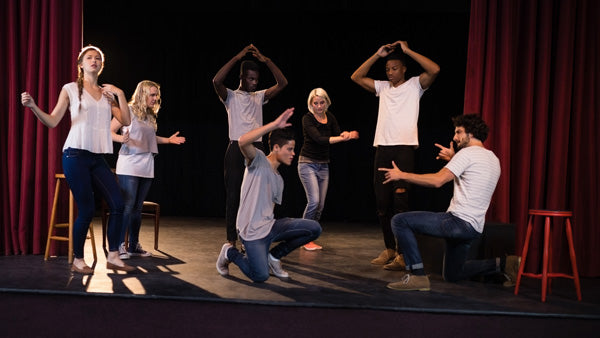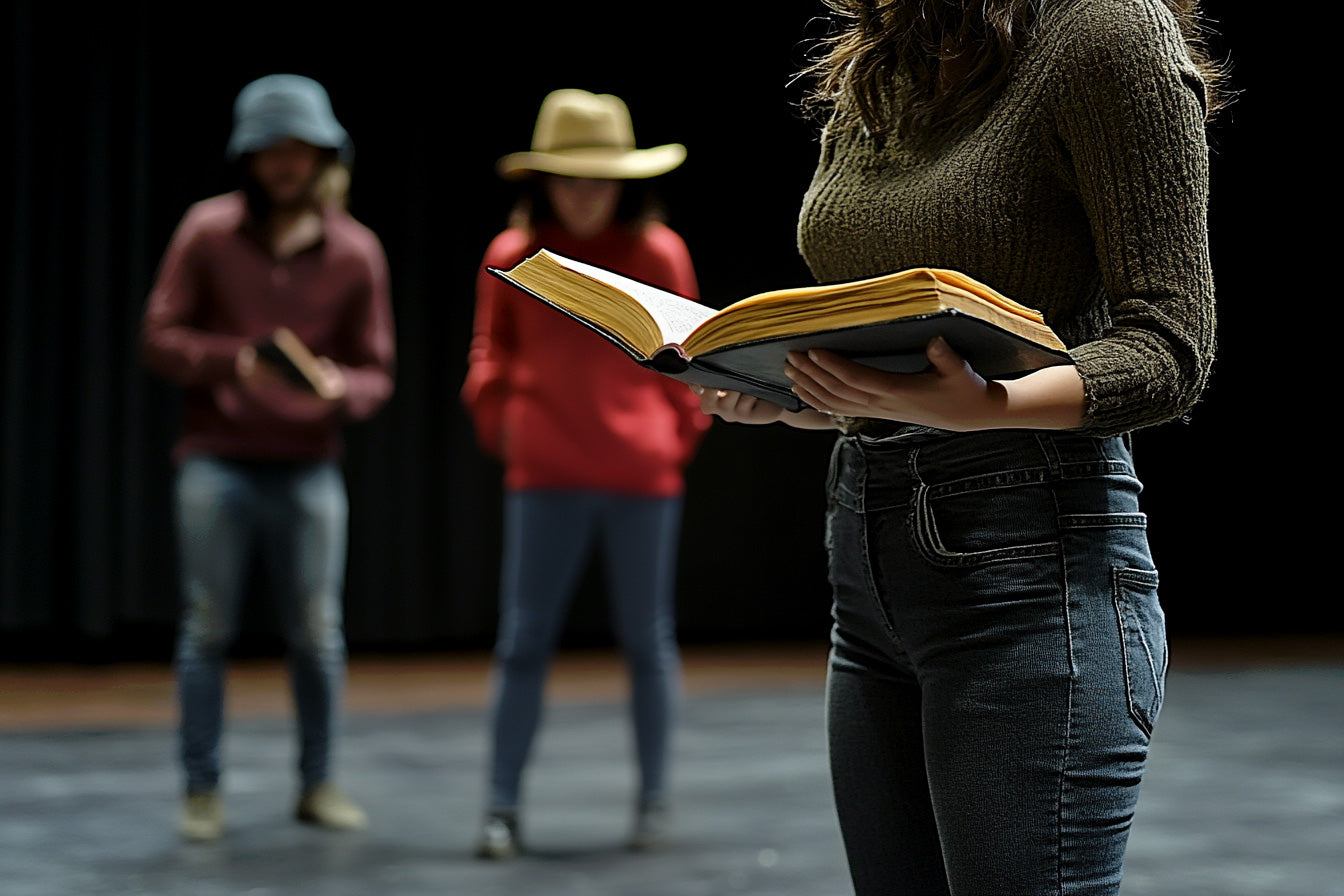Purpose
Practicing improvisation exercises can greatly help with communication skills and help reduce fear of being on stage. In a controlled environment of a class, you can easily get delegates to practice telling stories, acting out roles and performing for a small audience. Such improvisation exercises are useful for presentation skills, reporting or performing in meetings. Actors routinely use these exercises to train themselves.
A few exercises are provided here so you can get ideas of what they are about and how to run them. Aim to match the improvisation exercises to your specific training needs and maximise learning.
Objective
Act out a scene and improvise based on a given scenario as requested.
What You Need
- An area that can be used as stage.
Setup
Ask a volunteer to go on stage and improvise based on the following exercises. Pick the topic based on your course. Be creative and experiment to see what areas work best.
Here are several exercises you can try. Often you get the audience to play a role too. Make sure you swap delegates around so many can have a go at different roles. Don’t force roleplaying onto anyone as some dislike it. Let them warm up to it and volunteer in their own time.
Exercise: Three Zones of Emotions
- Divide the stage to three zones. Each zone represents a specific emotion, for example: happy, angry and sad. It is best if the emotions are simple and contrast with each other. You can write the emotions on cardboards and place them in the appropriate zones so everyone can see.
- Ask a volunteer to come on the stage to tell a story or share an experience.
- The volunteer should tell the story while going through the zones that represent the emotion associated with the story at that point. Ask the volunteer to adopt the emotion of each zone as they enter it. The transition between zones should be swift.
- A volunteer can remain at the edge of two zones with one foot in each. They can then adopt both emotions in one act.
- By adjusting the emotions attached to each zone, you can vary the exercise greatly based on what you want delegates to experience and what you want to teach.
Exercise: Change.
- Assign one or more delegates from the audience to be change makers.
- Ask for a volunteer to come on the stage. They need to act out a scenario or tell a story while onstage.
- As the act is underway, the change makers can dictate a change by saying “change”.
- The volunteer who is on the stage must pause and think of the last sentence spoken. They should then change it to something else. For example, they should turn a positive to negative. Instead of, “I went to the shops” the volunteer should say, “I didn’t go to the shops.” They can also change characteristics such as turning “blue” to “red” or “long” to “short”. They can change a characteristic, but they cannot say an unrelated new sentence.
- The person onstage can be asked to change rapidly, but you must supervise the change requests, so it doesn’t become too overwhelming or make the experience too random.
- Continue for a fixed amount of time. You can repeat with another volunteer.
Exercise: Entrances and Exits.
- Assign a keyword to each delegate. Choose words that come up in everyday conversations. Upon hearing the word, if a delegate was not onstage, should enter, and if was onstage, should exit. In both cases they need to justify why they enter and why they exit to extend the unfolding story and continue with the improvisation exercise.
- Examples of keywords are hand, look, listen and said.
- Avoid using words that are used too often and make the scene too chaotic. For example, avoid and because it is used too often. It turns this into a running exercise in and out of stage. The aim here is to make delegates think about storytelling, and so they focus on justifying why they need to enter or exit.
- You can also force situations where a delegate is stuck onstage, or offstage. For example, a delegate is asked to leave the room in the story but their keyword is not stated and so they are stuck onstage and need to justify why they are not leaving as part of their act.
- It is best to have a specific back story or scenario for this exercise, so everyone is on the same page. Limit the scope of the exercise to make sure it doesn’t get out of hand and become too random.
Exercise: Freeze.
- While volunteers are on stage, the audience can shout “freeze!” At this, everyone on the stage must freeze in the middle of their acts. The person who shouted freeze should then come onstage and assume the pose of one of the actors. The other actor can now go back off the stage. The act can then resume and the new person should continue the act from when it was frozen.
- This is a useful exercise for focusing on what is going on as the scene unfolds, paying attention to details and concentrating.
- Set up a specific scenario or story for the whole exercise so it stays focused.
- You can also use this for various soft skills exercises such as practicing assertiveness, emotional intelligence, empathy, and anger management.
More Exercises
- The above were just a few examples to inspire you on what you can do with improvisation exercises. The above are based on some great improvisation exercises listed here which you can use to get more inspired.
- The power of improvisation exercises is helping people get out of comfort zone and by making them think creatively. Get delegates go through several improvisation exercises so they gain a range of insights and get used to this style of thinking on the spot.
Timing
Explaining the Exercise: 5 minutes
Activity: 10 minutes each improvisation exercise
Group Feedback: 5 minutes
Discussion
After the series of exercises get the delegates analyse what they went through. Ask the following: What did you find most interesting in this exercise? What did you find hard? What can you do so that you can become better at it next time? Do you consider yourself natural at improvisation and acting? Which improvisation exercise did you like the most? Who performed exceptionally well and why were they so convincing?
Soft Skills Training Materials
Get downloadable training materials
Online Train the Trainer Course:
Core Skills
Learn How to Become the Best Trainer in Your Field
All Tags
Training Resources for You

Course Design Strategy
Available as paperback and ebook

Free Training Resources
Download a free comprehensive training package including training guidelines, soft skills training activities, assessment forms and useful training resources that you can use to enhance your courses.

Our Comprehensive Guide to Body Language

Train the Trainer Resources
Get Insights - Read Guides and Books - Attend Courses
Training Materials
Get downloadable training materials on: Management Training, Personal Development, Interpersonal Development, Human Resources, and Sales & Marketing














Leave a comment
All comments are moderated before being published.
This site is protected by hCaptcha and the hCaptcha Privacy Policy and Terms of Service apply.